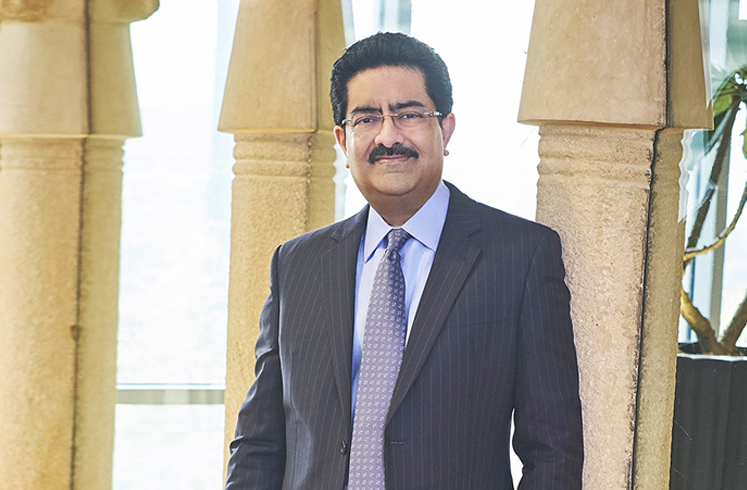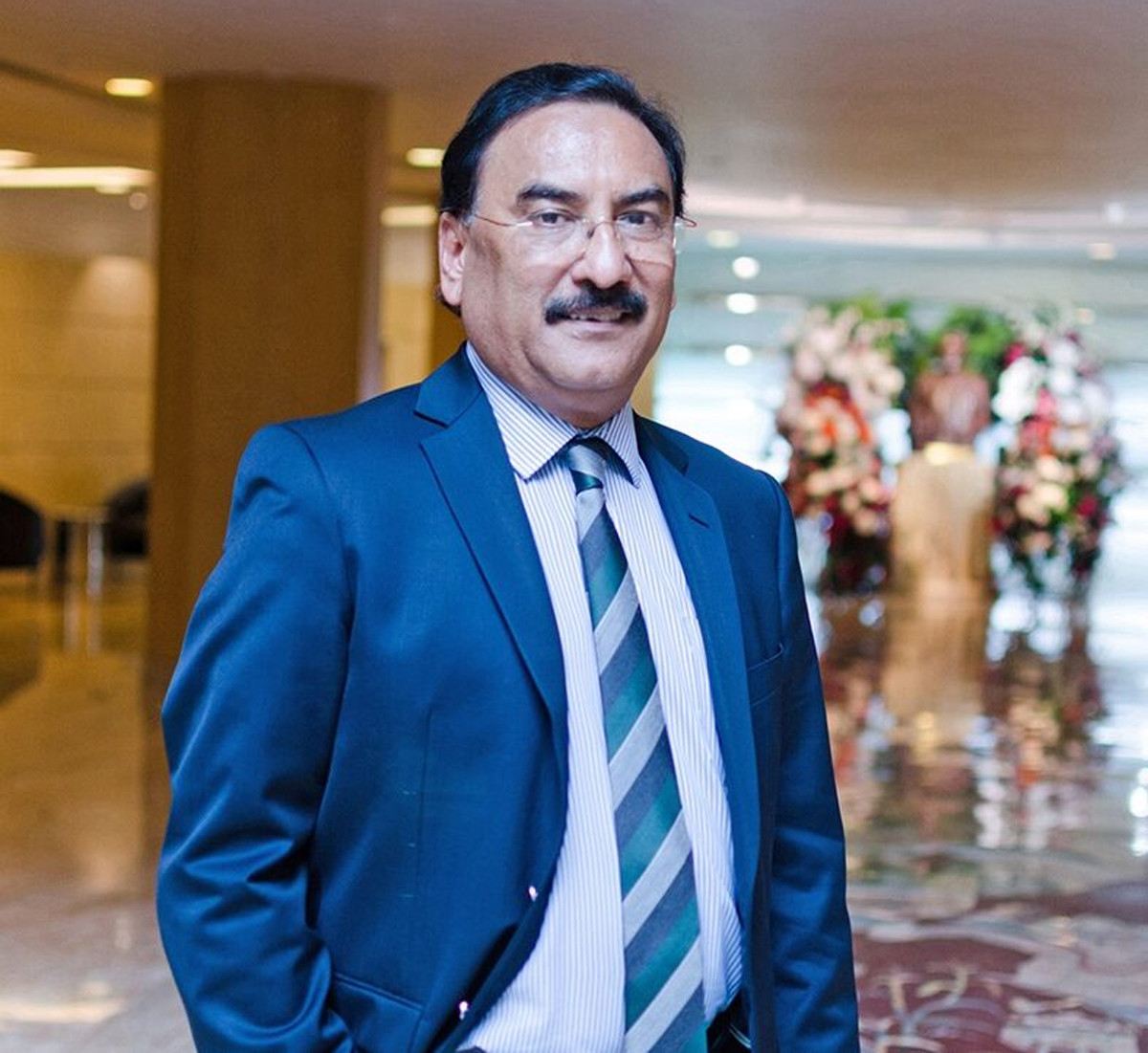2021 marks 75 years of Grasim. It was incorporated 10 days after India’s independence – a beginning of a new era for India and its people. Grasim was one of independent India’s first organisations and has played an integral role in India’s growth.

It was started as a textiles manufacturing unit to make India self-reliant and contribute to the nation’s growth. In the past 75 years, Grasim has grown exponentially from starting as a textiles manufacturing unit to becoming a global leader in VSF manufacturing and India’s largest chlor-alkali, Linen and insulators producer. It also the largest cement producer and diversified financial services (NBFC, Asset Management and Life Insurance) player in India through its subsidiaries UltraTech Cement and Aditya Birla Capital.
Mr. Kumar Mangalam Birla, Chairman, Aditya Birla Group, “Grasim traces its very origin to the spirit of nation-building. Its success over 8 decades is an emphatic endorsement of a self reliant India (Atmanirbhar Bharat). Grasim today, is home to world-beating fibre, chemicals and cement companies. The unmatched global scale built across diverse sectors is on the back of decades of dogged determination, relentless innovation, soaring and fearless ambition, incessant cost consciousness and agility. These are the qualities of an Atmanirbhar Grasim which has been nourished from India and flourished globally”.
Mr. Dilip Gaur, Managing Director, Grasim Industries Limited, “Grasim’s growth story began with a pioneering thought built on the spirit of nation building underpinned by our core values – integrity, commitment, passion, seamlessness and speed. In its 75 years of journey, we have always believed in symbolic partnership with all our stakeholders – growing and prospering together. We will continue to focus on sustainable growth and development through holistic nurturing of people, process, and planet. Our successful journey would not have been possible without the support of over 24,000 employees, 230, 000 shareholders, society and customers”.
As Grasim completes 75 years, we look back on the company’s illustrious history.
…
The 40s
Foreseeing a shortage of cotton, in 1947, G D Birla decided to establish a manufacturing centre for man-made fibres to supplement the textile fibre availability for clothing. He decided to set up a Rayon-based weaving unit at Gwalior and incorporated it as Gwalior Rayons and Silk Manufacturing or GRASIM, for short, on 25th August 1947. It was the beginning of Grasim’s story.
…
The 50s
The 50s marked steady growth for the company. In 1950, Grasim’s first weaving unit successfully commenced fabric production. In 1951, the Maharaja of Gwalior, His Highness Jivajeerao Scindia, offered land in Nagda to set up a VSF plant. Abundant water resources and proximity to textile markets in Bombay and Ahmedabad made Nagda the right choice to set up a manufacturing unit.
By 1954, Grasim had set up its second manufacturing plant (15 TPD) at Nagda and began manufacturing viscose staple fibre (VSF). In the years to come, VSF turned to be a game-changer for India’s textiles industry.
…
The 60s
In the early 1960s, Grasim set up its Pulp and Engineering division at Nagda to boost its commercial competitiveness. At the same time, the Birla Research Institute for Applied Sciences was established at Nagda to help in developing Grasim’s research capabilities.
Within a few years of its establishment, the Institute filed the world’s first patent to develop pulp (raw material for manufacturing VSF) from mixed hardwood. This research laid the foundation for the technology to be used at Grasim’s new plants that were subsequently set up in Harihar and Mavoor (now discontinued).
Incidentally, this patent was also the Aditya Birla Group’s first-ever patent.
The 70s
In 1972, Grasim set up the world’s first mixed hardwood plant at Harihar based on the patented technology developed at Birla Research Institute for Applied Sciences. In the same year, Grasim optimised its manufacturing process by establishing a plant to manufacture 33,000 TPA of caustic soda for captive use.
Two years later, Grasim incorporated Thai Rayon, becoming the first Indian company to establish production capacities on foreign soil. Grasim soon began expanding its business outside India through JVs and acquisitions to make India a global economic power.
…
The 80s
In the 80s, Grasim continued to expand its business outside India. Back home, it started diversifying its business. In 1985, it set foot into the cement market with its first plant, Vikram Cement. Set up at Jawad in Madhya Pradesh, the capacity of the plant was 0.5 MTPA.
…
The 90s
The 90s brought a rapid transformation in the organisation. Backed by R&D capabilities to develop strings and filaments, Grasim started developing in-house capabilities for Lyocell technology, eventually leading to the launch of a 0.5 TPD Lyocell pilot plant in 1993. The plant was established at 20 per cent of the cost of setting up a similar plant in Europe. In 1998, Grasim expanded its business abroad by acquiring AV Cell Pulp Mill in Canada.
It was also a time of cultural shift in the organisation. An HR department was put in place to change the perspective of people within the organisation. It testified to Grasim’s belief that its people were its biggest assets.
The 90s brought a rapid transformation in the organisation. Backed by R&D capabilities to develop strings and filaments, Grasim started developing in-house capabilities for Lyocell technology, eventually leading to the launch of a 0.5 TPD Lyocell pilot plant in 1993. The plant was established at 20 per cent of the cost of setting up a similar plant in Europe. In 1998, Grasim expanded its business abroad by acquiring AV Cell Pulp Mill in Canada.
It was also a time of cultural shift in the organisation. An HR department was put in place to change the perspective of people within the organisation. It testified to Grasim’s belief that its people were its biggest assets.
…
The 2000s
The turn of the millennium brought a new dawn for Grasim’s cement business. In 2001, it acquired a 10 per cent stake in L&T and subsequently, in 2004, acquired a controlling stake in UltraTech Cement from L&T. Currently, Grasim is India’s largest cement player.
Grasim also started focusing on developing capabilities to produce fibres for the non-woven sector. Accordingly, it endeavoured to develop Lyocell-based non-woven fabrics through a one-step process. Grasim also developed exotic varieties such as perfumed fibres, mosquito-repellent fibres, anti-bacterial fibres and thermo-regulating fibres.
In 2005, Grasim also strengthened its global footprint by acquiring AV Nackawic Pulp Mill, Canada, in a joint venture with other Group Companies and Tembec Inc. In 2006, it acquired a VSF plant in China, leading to the formation of Birla Jingwei Fibres Company.
…
The 2010s
Global acquisitions of strategic importance, commissioning of state-of-the-art plants, the launch of sustainable products and global recognition in the form of awards and accolades make the decade of 2010-20 one of Grasim’s most significant periods.

In 2011, Grasim acquired a key stake in Domsjö Fabriker (Domsjö) AB, Sweden, and in 2012 acquired AV Terrace Bay, Canada. In 2013 and 2014, it set up plants of global standards at Vilayat, Gujarat, to manufacture caustic soda and epoxy.
In 2018, Grasim won the Dun & Bradstreet Corporate Award for stellar performance in the textile sector and also ranked #205 in the ‘Global 2000 – Growth Champions 2018’ list, compiled by Forbes Magazine, USA.
Furthermore, in 2019, it took a quantum leap in sustainable fashion by launching Livaeco, a high-quality fluid fabric made with nature-based fibres.
…
The 2020s
The decade began with the COVID-19 pandemic, which brought the world to its knees. True to its legacy of helping the community and uplifting it, Grasim rose to the occasion and quickly mobilised its resources to help the communities near its manufacturing locations.
Grasim’s efforts included providing ration kits to the underprivileged, sanitisation of villagers’ homes and empowering the local women by engaging them in activities such as mask-making. Along with taking care of the community, the company also ensured the safety and health of its people, who were working in the manufacturing units.
Despite the lockdown and the pandemic causing uncertainty, Grasim has continued its slew of acquisitions and new product launches to shepherd an economic revival.
In the past 75 years, Grasim has been a trailblazer. It filed the world’s first patent for developing pulp (raw material for manufacturing VSF) from mixed hardwood. Later, it established the world’s first bamboo-based rayon-grade pulp plant and also became the first Indian company to set up manufacturing units outside India.